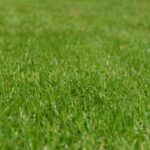The Landscaper Magazine gets top tips from commercial suppliers Wienerberger on how to choose the right clay paver for a landscaping project
Choosing the right clay pavers for a commercial project is no small feat; there are a number of factors to consider including surrounding architecture, the existing surface upon which the paving is to be laid and of course, the all-important client brief. Add to this a market saturated with options, each boasting different benefits and qualities over the other and it’s fair to say that the task might feel challenging.
Wienerberger, the leading supplier of wall, roof and paving products, has worked with clay for over 200 years and are well-versed in its properties and the impact it can have on a development. Ultimately, the company has found the paver selection is just as vital a consideration as the bricks and roof tile choice for a project, as they can really transform a space when working in tandem with other products.
Clay bricks vary in texture
The huge breadth of clay bricks and roof tiles on the market today are testament to the fact that clay is a flexible building material capable of producing an end product that varies enormously in texture, colour and shape and therefore, different styles. This is no different for paving. There’s a range of size formats, finishes and colours available; from vivid reds, contemporary blues and earthy tones of orange, brown and buff. Clay pavers can be instrumental in enhancing all kinds of projects and alongside other benefits, they also stand the test of time.
To best showcase why clay fits the bill for landscaping, we should look to recent projects that used clay pavers in unique and exciting ways to compliment the wider development and surrounding areas.
South Gardens, Elephant Park

One of clay’s most obvious benefits is its incredible colour and textured appearance which has the ability to bring character to a project. The South Gardens development in Southwark is a community-orientated project of 360 new homes, that consists of low-rise townhouses, mid-rise mansion blocks and a 16-storey tower block located around three horticulturally rich courtyards.
For the paving, the architects needed something to reflect and compliment the communal courtyards that are lined with trees, shrubs and flourishing green spaces, bringing a woodland feel to an urban setting. For this, Wienerberger supplied a number of pavers, including Rosa Waterstruck WF, Siena WF and Nero WF, which were used to create a harmonious blend of hard and soft landscaping throughout the courtyard. The pavers, which have natural earth-tone colours, were laid in a herringbone pattern to match the appeal of a traditional cottage garden and encourage residents to appreciate the greenery as they enjoy the space. The choices by landscape architects here allowed for the pavers to not only guide residents through this urban sanctuary but to enhance it and help create a cohesive space to relax and socialise.
Piccadilly Place

Cohesion is especially important in commercial projects because a lot of the time part of the challenge includes creating a space that stands out on its own but looks to fit in with the existing, surrounding architecture. A good example of this being achieved through paver selection is Piccadilly Place in Manchester; architects were tasked with breathing new life into the City district which is currently a mixed-use development and includes high quality public realm areas, a hotel, four office buildings, residential accommodation and retail space.
Paving choice here was all about communicating a regenerated feel for years to come that stuck close to the surrounding structures and echoed the distinctive history of Manchester. This is where the Padova clay paver worked to complete the task. Mirroring the industrial red tones of Manchester’s manufacturing heritage, the rich colours within these clay pavers brought warmth to the main piazza whilst complimenting the use of other materials used throughout the space, such as granite. Due to clay’s colourfast properties, the striking colour will last for decades as the surrounding space matures. The longevity of clay, compared to other materials, is unmatched which is why it makes a fantastic option for landscaping projects with the high footfall associated with a bustling city centre.
East Kent College

As well as having a long life, clay is also extremely durable which is vital for landscaping – especially on commercial projects where the ground will have to combat wearing not only from being walked upon but also the impact from vehicles. In these cases, there are only a limited amount of options to consider that won’t require regular maintenance. East Kent College is one project in which the architects opted to use a clay paver over a concrete one due to the strong performance, high quality finish and unmatched longevity that clay could provide.
The project required the installation of a high performing road extension that would enhance the overall feel of the refurbished school building, making it the focal point of the college campus. The Dortmund Dark Multi and Dragfaced Square Edge Blue pavers were used to complement the character of the building and enhance the appearance of the building to make it a focal point of the campus. Ultimately here, clay met all the requirements the project needed due to its high performance and lasting aesthetic.
When it comes to paving, clay really is unmatched. Providing a vast array of texture, colour and shapes available, minimal maintenance and a long lifespan, clay paving really has the ability to make a lasting difference to your development.
For more project inspiration, information on the benefits of clay or to browse our clay paver range visit wienerberger.co.uk

